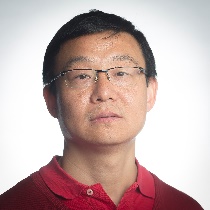时间:9月2日(周二) 下午1:45
地点:师昌绪楼403会议室
Towards new high-strength and heat-resistant Al alloy design enabled by additive manufacturing
Gang Ji
National Centre for Scientific research (CNRS),Lille,France
Short biography:

Dr. G. JI obtained his Bachelor and Master degrees at Shanghai University in China and his Ph.D. degree at Université de technologie de Belfort Montbéliard (UTBM) in France. He joined CNRS as a permanent researcher in 2008. His current research interests include (1) interface engineering of advanced metal matrix (nano-) composites for improved mechanical and thermal properties;(2) characterization and understanding of the metastable and anisotropic microstructure and defects in alloys and composites developed by additive manufacturing. In his career to-date, Dr. JI has published around 160 peer-reviewed journal papers including Acta Mater., Angewandte Chimie, Nature Mater., (h-index: 44 from Google Scholar) and has around 100 contributions in international conferences. He is a member of editorial boards of journals “Nano Materials Science” and “Metals”. He was rewarded a 2016 Gledden Fellowship by University of Western Australia, 2021 ‘Scripta Materialia’ outstanding reviewer award and 2023 IAAM scientist medal.
Abstract:
Softening due to severe strength degradation is inevitable in metallic materials at elevated temperatures especially at T > 0.5Tm. The popular pathways to enhance high-temperature strength have been realized by integrating second-phase reinforcements, such as micro-/nanosized intermetallics, precipitates or ceramic particles in the alloy matrix. In this regard, the most efforts have been made to maintain high volume fraction of the evenly-distributed second-phase particles, while improving their coarsening-resistance. The recent thriving additive manufacturing (AM) technology has shown not only its massive industrial application prospects in rapid prototyping of complex-shaped metallic component with unprecedented freedom, but also highly potential to achieve novel metastable and ultrafine microstructures exploiting its inherent rapid solidification process. In particular, a specific 3D ultrafine cellular-like architecture, consisting of one phase/domain in cells enclosed by the other phase/domain as 3D interconnected network as cell boundaries, has been extensively reported in AM Al, Fe, Cu, and other alloys.
In this work, we proposed a new architecture design strategy for developing high-strength and heat-resistant Al alloys using AM. We demonstrated that a thermally stable nano eutectic cellular network can be engineered in a novel near-eutectic AlLaScZr alloy during laser powder bed fusion (LPBF) process. The LPBFed alloy exhibits exceptional strength above ~0.6 Tm of Al, where the tensile yield strength reaches ~250 MPa at 300 °C, two to five folds of the conventionally fabricated Al alloys.



